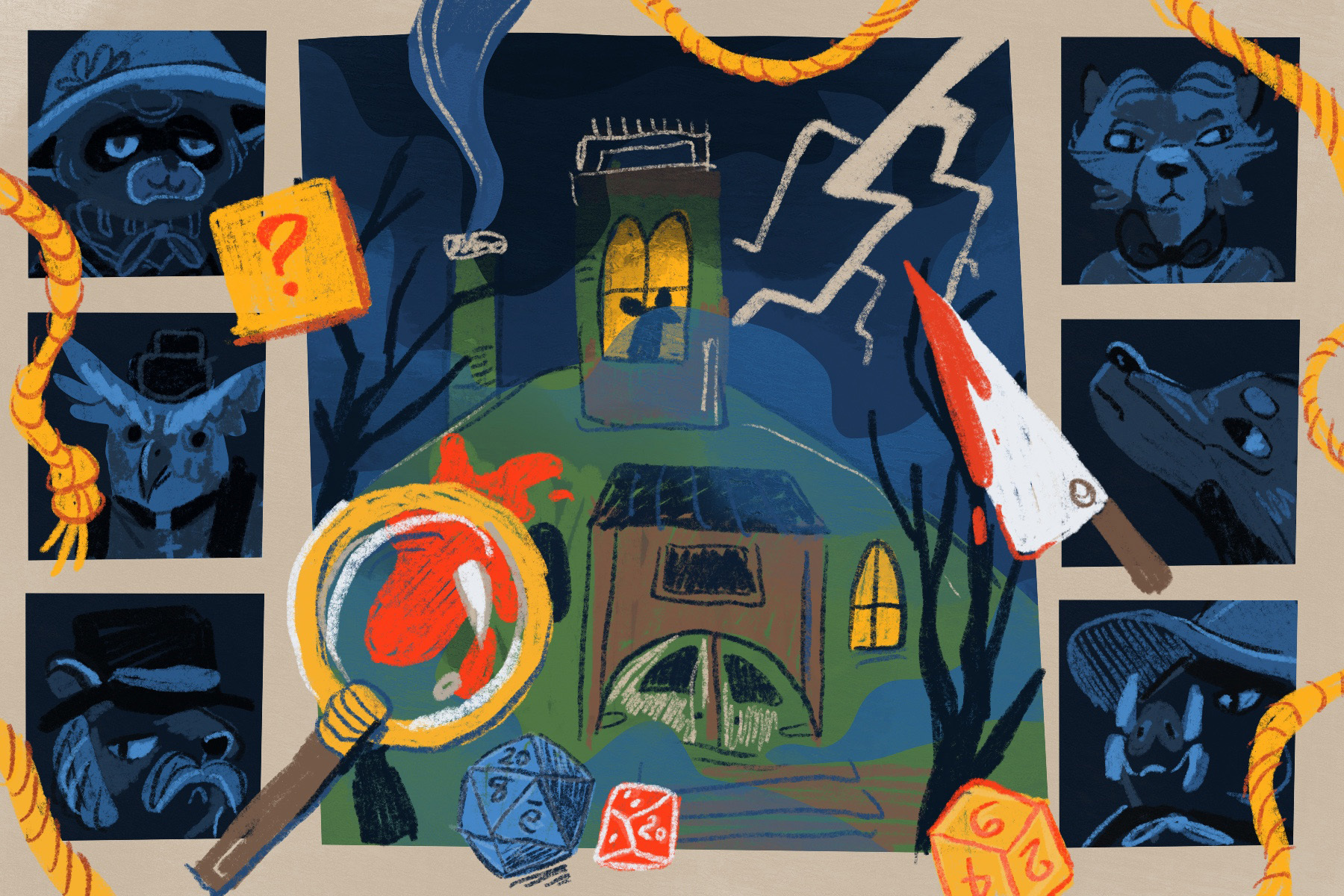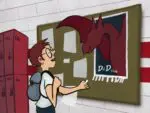When most people think about Dungeons and Dragons, they picture nerdy teenagers sitting in a basement pretending to be knights battling a dragon or evil wizard. Dropout’s “Dimension 20” challenges this stereotype. Created and game mastered by Brennan Lee Mulligan, the web show uses D&D to tell complex and engaging stories. Past seasons of the anthology show have told tales well suited for D&D due to their propensity for combat and use of magic. However, in the most recent season, “Mice and Murder,” the cast of CollegeHumor alumni use the game in a different way, attempting to solve various mysteries plaguing the Brockhollow family’s manor. In the process, the cast shows off the power of D&D as a storytelling tool, despite the game not being built for solving mysteries.
As the name “Mice and Murder” suggests, the characters are not humans, but small rodents, birds and dogs. Besides their species, the players’ characters are also defined by their chosen class and subclass. In D&D, a character’s class gives a rough outline of their abilities, and the subclass further refines their background and specialty. In order to complement the murder mystery, most of the season’s cast are playing rogues, a class that relies on stealth and perception to problem solve.
Three of the season’s rogues, Buckster $ Boyd, Gangie Green and Daisy D’umpstaire, show that the benefit of having so many rogues is two-fold. First, it provides the audience with fewer game mechanics to understand, and second, rogues are built with high wisdom and intelligence, skills that prove incredibly useful in murder mystery scenarios. Each character’s subclass helps distinguish between the rogues. Sam Reich plays Boyd, who is a pig in the mastermind subclass. This gives him the social influence and organizational power of an oil tycoon. Katie Marovitch plays Green, the groundskeeper. He is in the thief subclass, highlighting his criminal past and stealth abilities as a weasel. Rekha Shankar plays D’umpstaire using the assassin archetype, creating a raccoon version of the classic Holmes character Irene Adler.
Similarly, the party’s fourth rogue, Detective Sylvester Cross, and fighter, Lars Vandenchomp, pay homage to Sherlock Holmes and John Watson themselves. Grant O’Brien plays Cross, the world’s best detective, in the inquisitive subclass. This gives him the ability to investigate and deduce just like Holmes. Ally Beardsley plays Vandenchomp, a retired war general, in the battle master subclass. They are not an exact copy of the classic duo, but the characters were built to complement one other just like the well-known pair. Cross, as a rogue, has high scores in intelligence and wisdom, but lower constitution and strength scores. Vandenchomp makes up for these shortcomings with their high constitution and strength scores. The dynamics of the pair are familiar, but it still tells an original story that is engaging to the audience.
The season’s sixth character, Vicar Ian Prescott, is in the bard class. Bards are usually musical performers with magical abilities, but in a whodunit, magic’s existence would make the supernatural an easy loophole to bypass the mystery. To combat this, Prescott’s player Raphael Chestang flavored the vicar’s abilities as non-magical skills. Flavoring is the process by which game mechanics are stylized to fit the story’s world. It is essentially describing an ability differently to match how the player views their character and the world they exist in. For example, the bless spell is usually described as a deity offering support to the party. The vicar’s bless spell, however, is adorably stylized as a piece of helpful encouragement for the characters. Ruling out the supernatural in this way binds the mystery’s solution to real-world logic, making the show realistic for viewers.
To actually find clues and solve the mystery, the characters make ability checks; they roll a 20-sided die, then add their numerical bonus for the particular skill. In a murder mystery, the most common skills used are investigation, perception and insight. While all are based on the characters’ wisdom and intelligence scores, each offers distinct information in “Mice and Murder.” Investigation checks give both what a character sees, and assumptions or realizations related to that information. On a successful perception check, Mulligan describes only what the character can see. Insight checks are like investigation checks on people; they provide perceived emotions and thoughts of another character.
These outcomes are vaguer than those usually given in a D&D campaign, wherein checks would walk a player through how the information affects the plot in context. In “Mice and Murder,” however, many realizations and conclusions are left up to the players themselves. Throughout the campaign, the players often have to discuss clues together in order to solve the mystery. This keeps both the players and audience engaged because they are doing most of the leg work in solving the mystery; the solution is not handed to them on a silver platter.
Another major difference between “Mice and Murder” and more classic D&D campaigns is the lack of formal battles. In previous Dimension 20 seasons, every other episode is a battle episode where the players play through combat encounters. The game mechanic that defines combat is initiative; all characters are placed in an order based on a dice roll and their dexterity, then on each turn, they take their actions. Scheduled combat wouldn’t work in “Mice and Murder” because, unless the players immediately knew the guilty party and planned to kill them, a battle every other episode would lead to the deaths of every other character in the mystery.
But initiative was still used this season. As Mulligan explains, initiative can also be used in moments where time is limited, and characters must choose what is most important for them to do. Therefore, initiative order is used in frantic moments in the mystery, particularly immediately after a murder. After someone is killed, characters in a murder mystery don’t continue as though it’s business as usual; in “Mice and Murder,” the initiatives after each murder create an ebb and flow of the story, making it more like a classic whodunit movie for viewers.
Due to the COVID-19 pandemic, “Mice and Murder” was filmed remotely. Thankfully, many D&D resources are available online. In fact, many casual players telecommuted to games before the pandemic. The remote format of the game was actually incredibly valuable to the season because it allowed for the players to have an important character element needed in a murder mystery: secrets. Aside from the secrets built into their characters, Mulligan was also able to use texting to communicate clues and realizations to players in real-time. Then, the players were able to choose whether to share the information in character or keep it to themselves. Many viewers raved about this aspect of “Mice and Murder” because it made the season immersive. They were able to hear the characters themselves share their secrets, making the reveals feel authentic.
Available on the Dropout website and app, “Mice and Murder” both impressed “Dimension 20” fans and appeals to people not familiar with the show or Dungeons and Dragons. The season is an easy way to learn about the game because it does not include the mechanics of spellcasting or formal combat, so it is easy to follow. The cast, many of whom had never played before, intelligently interpret clues to solve a mystery and offer comedic moments throughout the season. Most importantly, the season offers an original take on the whodunit while still containing elements that will be familiar and beloved by any murder mystery fan.

















